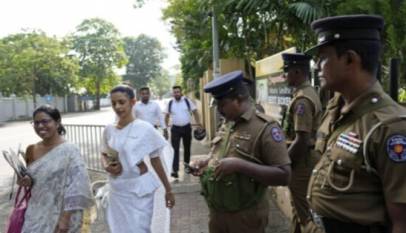Record devaluation of taka in 2023
Staff Correspondent: Due to the negative impact of the global recession and the domestic recession, there was a clear shortage of dollars in the country’s market throughout the year. Dollars were not available even with high prices. This has resulted in a record depreciation of the taka against the dollar in the last one year. Due to the manipulation of the value of the dollar, the currency has depreciated at different rates.
According to the central bank, the value of taka has decreased by 5.77 percent in the last one year. Banks devalued the dollar by 22 percent. The dollar has depreciated by 19 percent in the open market. Even if the value of money against the dollar decreases at that rate, the dollar is not matching the demand in the market.
Meanwhile, in 2022, the taka depreciated by 21.21 percent against the dollar. At the beginning of the year, the price of the dollar was Tk 85.80. At the end of the year, it increased to Tk 104. Its price has increased by Tk 18.20 during the discussion period. At that time, the value of the dollar was mostly under the control of the central bank. But by the end of this year, most of the time was out of control, which is still ongoing.
The rupee has been depreciating against the dollar for two years. Among them, the current year has decreased the most.
In February 2022, Russia-Ukraine attack started the global crisis. Then its negative impact started to fall on the economy of Bangladesh. According to the central bank, the depreciation of the rupee against the dollar has been 28.21 percent in the last two years. But the average value of dollar sales in banks has been depreciated by 44.52 percent.
The devaluation of the rupee against the dollar has had a multifaceted negative impact on the economy. External liabilities have increased, import costs have increased. Due to this, the price of imported goods has increased. By increasing the price of imported products, it has an impact on other products as well. The increase in the price of dollar and the increase in the price of fuel oil in the international market have also increased the cost of transportation of all types of goods. It has increased the price of all products including food products. The manipulation of the syndicate also worked behind the increase in their prices. At the same time, the purchasing power of the consumer has decreased. Inflation rate has increased due to increase in prices of goods and reduced purchasing power of consumers. By the end of this year, food inflation has crossed double digits.
According to sources, when Russia-Ukraine war broke out in February 2022, the prices of all types of goods increased in the international market. Due to this, the import cost of the country also increases. From April of that year, the price of the dollar began to be affected. As a result, the central bank-imposed import controls from April. Which has now been extended further. At present banks do not open LCs without advance dollar facility for import of commercial goods. As a result, the import of these products has decreased. At the same time, the central bank is also providing dollars from the reserves for the import of essential products. Thus, essential imports have been kept normal. However, there has been a major negative impact on commercial imports.
Meanwhile, if the dollar price was under the control of the central bank in 2022, it has gone out of control in many cases this year. The central bank has sometimes tightened to keep the dollar under control. But the remittance flow has decreased even though the price of dollar has decreased in the market. At the same time, dollar trading in the open market has stopped. This has increased the volatility in the market. As a result, the central bank relaxed the control over the market at the end of the year. Taking advantage of this relaxation, banks began to buy dollars at a higher price than the rate fixed by the central bank to meet their needs. At present, the highest rate for buying remittances in banks is Tk 109.75. With this, the government can give a total of 5 percent incentives, including two and a half percent incentives from the government and 2.5 percent incentives from the banks. According to this, the dollar price of remittance should be Tk 114.30. But almost all banks are buying remittance dollars at Tk 122 to Tk 126. In addition, exchange houses are not selling remittance dollars abroad. As a result, banks are forced to buy remittance dollars at higher prices. These dollars are supposed to be sold to customers at a maximum of Tk 110. But apart from the dollars bought from the central bank, no dollar collected by the commercial banks on their own initiative is available at that price. As a result, the import dollar has to be bought at Tk 124 to Tk 128. In some cases, there is also precedent for buying dollars at higher prices.
Officials of commercial banks said that foreign exchange houses are aware of the dollar crisis in the country. Because of this they are increasing the price of the dollar. Now they don’t pay dollars if they don’t buy at a higher price. As a result, the remittance flow in the country is decreasing and increasing the dollar crisis.
According to the central bank, at the beginning of this year, the price per dollar was Tk 104. Now it has increased to Tk 110. Accordingly, the value of the rupee has decreased by Tk 6 or 5.77 percent. But dollars are not available in the market at this price. As a result, every dollar has to be bought at Tk 124 to Tk 126. Some banks are buying dollars at higher rates. On an average, every dollar is sold at Tk 126, but its price has increased by Tk 22 in a year. According to this, the value of money has decreased by about 22 percent. At the beginning of the year, the price of the dollar in the open market was Tk 106. At the end of the year, it increased to Tk 127. According to this, the value of rupee has decreased by Tk 21 or 19 percent. Last August, its price had increased to over Tk 130. Later, with the intervention of the central bank and intelligence agencies, the price of the dollar fell slightly in the open market.
According to central bank sources, in January 2022, the price per dollar was Tk 85.80. According to this, the depreciation of the taka has been Tk 24.20 or 28.20 percent. Banks have depreciated by 44.52 percent in terms of dollar value.
Since August 2022, income has been falling relative to the cost of the dollar. As a result, the dollar crisis increased. Dollars have been provided from the reserves to deal with this crisis. It also reduced reserves. Reserves have decreased by $7.12 billion in a span of one year. In December last year, the country’s foreign exchange reserves were $3,394 million. At the beginning of the day on Thursday, it decreased to $2,682 million. Earlier, in August 2022, the reserves increased to a maximum of $4,806 million.
Rare Israeli airstrike in Beirut kills Hezbollah commander and more than a dozen others
International Desk: Israel launched a rare airstrike that killed a senior Hezbollah milita…







